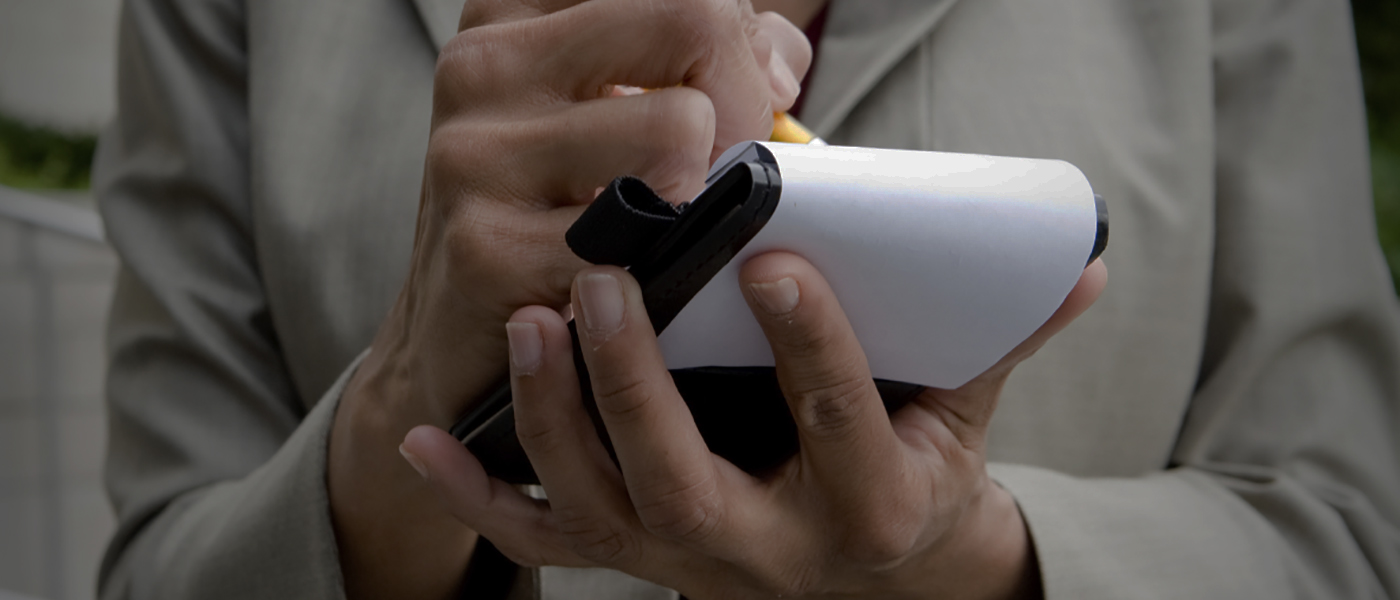Who counts as an expert? Rethinking which sources — and solutions — are featured in news coverage
by: Heather Gehlert
posted on Wednesday, August 23, 2023
No matter how severe a problem, statistics don’t speak for themselves. Reporters must continually work to find sources who can help interpret the data — and humanize it. To do so, BMSG often recommends that journalists connect with sources who we refer to as “authentic voices” — those whose stories are grounded in lived experience.
Time and again, we see their impact, from niche outlets to national newspapers to lifestyle magazines. For example, this article from Vogue shows how policy decisions made by people with power shape the lives of those without it. By highlighting the stories of five individuals who terminated their pregnancies, the author also helps to decrease the stigma surrounding medication abortion following the end of Roe v. Wade.
Yet, as compelling as these sources with lived experience can be, they often leave out another key aspect of responsible journalism that BMSG urges reporters to include: systemic solutions. Examining problems without also exploring solutions is “like pointing out your children’s mistakes every morning and then expecting that they’ll become better people,” David Bornstein, co-founder of Solutions Journalism Network, once wrote in a blog for Greater Good.
The omission is hardly surprising. BMSG research over three decades has found that both authentic voices and solutions are underrepresented in coverage of public health issues. Our research since the start of the pandemic has revealed another nuance: When authentic voices or solutions are included, they appear separate from each other. In other words, stories that quoted community members focused mostly on the problem side of the equation, highlighting personal hardships and, at times, triumphant comebacks. Similarly, when solutions were discussed, they did not come from people whose opinions were formed from direct experience; instead, they came mostly from government or business officials.
This pattern held true across news coverage of many topics including food assistance, housing and health equity, racism as a public health crisis, and our country’s recovery from COVID. The most telling data came from stories about how racism harms health: 92% of articles quoted government leaders, yet only 24% of articles quoted community members. And while our researchers found that journalists often described “regular people” as collective agents of change, with 4 out of 10 articles mentioning community-led calls for racial justice, fewer than 2 out of 10 articles showed the role that community members played in passing and implementing actual declarations of racism as a public health crisis.
By contrast, the issue areas our team studied yielded only the rarest examples of authentic voices being positioned as experts in other coverage. In stories about housing, for example, personal information from unhoused people only tended to evoke pity or fear, and unhoused people were rarely quoted speaking about solutions or advocating for change. Our findings from news about the pandemic were even more bleak: Though many articles published in 2021 focused on the national goal of “recovering from the pandemic,” people who had been directly affected by job losses and other issues during COVID — including frontline workers — were largely absent from these stories. Instead, representatives from businesses large and small were overwhelmingly quoted. The dearth of these perspectives in the news could make it difficult to see the need for a sustained recovery that goes beyond helping the business sector.
Why do journalists believe that people with lived experience should be strictly interviewed as victims? Why shouldn’t the people with the most direct experience of a problem have a loud voice in solving it?
Recommendations
Ultimately, amplifying community members’ voices and positioning them as experts who ought to have input into solving problems may be more of an organizing task than a communication directive. However, communication opportunities are often embedded in organizing. For example, advocates could connect journalists to more authentic voices so the sources in their stories speak from real experience. Similarly, advocacy organizations could provide media advocacy training to their constituents so they are prepared to be sources for reporters.
Additionally, reporters can rethink what makes a source credible and what makes a particular angle newsworthy in the first place. “Why do we believe that when people cause or exacerbate problems it’s newsworthy, but when people respond thoughtfully to problems it’s not?” asked the Solutions Journalism Network’s Bornstein in an opinion piece for The New York Times. “There’s no rule book that I am aware of that says journalism should focus primarily on bad stuff.”
We agree and would take that sentiment a step further, asking: Why do journalists believe that people with lived experience should be strictly interviewed as victims? Why shouldn’t the people with the most direct experience of a problem have a loud voice in solving it? Some journalists are showing what it looks like to feature people with lived experience as problem-solvers. In this article, Andrea Castillo of the Los Angeles Times features Tawheeda Wahabzada, a refugee who collaborated with other immigrants to form a supportive online community for people who self-deport because they are tired of living in fear. Another example that elevates community empowerment comes from CNN and highlights Tyrique Glasgow, a South Philadelphia resident who is working to end violence in the neighborhood where, as a child, he was lured into selling drugs.
Telling stories that highlight the perspectives of people who have lived experience with an issue, and ideas on how to address it, is a big challenge that comes with many benefits when done well. Such stories benefit readers by putting a human face to nuanced or abstract social problems; they benefit publishers by creating compelling — and highly clickable — content; and, most importantly, they benefit people experiencing hardships by acknowledging the value of their voice and lived wisdom, and helping them raise it in pursuit of solutions.



